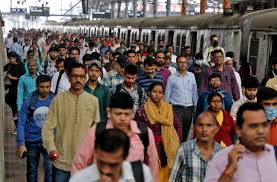The Biggest Scam: Bengaluru CEO’s Viral Post Exposes India’s Middle-Class Economic Crisis
A viral LinkedIn post by Ashish Singhal, Group CEO of PeepalCo, has sparked national conversation about the silent economic struggle faced by India’s middle class—caught between stagnant incomes, rising living costs, and mounting credit burdens.

Middle-Class in Crisis: A “Well-Dressed Decline”
In his now-viral post, Singhal described what he calls a “silent crisis” plaguing India’s middle-income earners. His candid reflection noted that middle-class salaries have seen little to no meaningful growth, even as essential expenses have skyrocketed.
“The biggest scam no one talks about? Middle-class salaries,” wrote Singhal.
According to him, those earning under ₹5 lakh annually have only seen a 4% CAGR (Compound Annual Growth Rate) over the past decade. For those in the ₹5 lakh to ₹1 crore range, the increase is a dismal 0.4%. Meanwhile, inflation—especially in essential items like food—has soared by nearly 80%, shrinking disposable incomes and purchasing power.
Credit Dependency and Eroding Financial Security
Despite this financial strain, the middle class continues to maintain the appearance of affluence—new smartphones, occasional flights, EMIs on cars and homes—but at a high cost. Singhal referred to this as “a well-dressed decline,” suggesting that lifestyle maintenance comes at the expense of long-term financial health.
“Skipping savings, delaying healthcare, ignoring retirement planning—this is the hidden toll of trying to survive the economic pressure,” he wrote.
He also noted a stark contrast in technological growth, particularly AI, which has expanded sevenfold, primarily benefiting high-income and wealthy individuals. Meanwhile, the middle class is expected to endure the pressure silently—with no public bailouts or policy relief.
Social Media Reactions: Empathy, Accountability, and Critique
The post struck a chord across LinkedIn, with thousands engaging in conversation.
One founder responded, “I’ve been seeing this across industries—the middle class is squeezed from both ends.” However, he added a critical note: “It’s also partly their fault. Blind conformity to the 9-to-9 grind and the home-loan dream has left them vulnerable.”
Another user questioned Singhal’s own leadership practices:
“As a CEO, how do your employee pay hikes compare to yours? That’s something we’d like to know.”
This sparked broader debate around corporate responsibility and how company leadership can play a role in mitigating this crisis.
Economic Reality Check: A Broken Dream?
Beyond the personal anecdotes, the deeper issue remains—India’s middle class is bearing the brunt of economic volatility. With no significant wage reforms, rising taxation, and a weakening rupee, many feel increasingly disillusioned.
A commenter wrote bluntly:
“India has always functioned like this. Taxes go up, but there’s nothing in return. The smart ones leave. Crying on platforms doesn’t change anything.”
Despite this cynicism, the viral nature of Singhal’s post suggests a growing awareness—and perhaps the start of a broader demand for change.
Conclusion: Time to Break the Silence
Ashish Singhal’s post has unearthed what many middle-class Indians feel but rarely voice—the stress of sustaining a decent life under crushing financial strain. With inflation rising and incomes stagnating, the pressure is mounting.